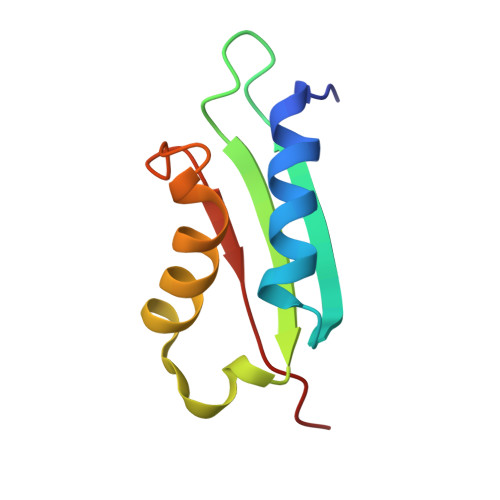Mitochondrial Bol1 and Bol3 function as assembly factors for specific iron-sulfur proteins.
Uzarska, M.A., Nasta, V., Weiler, B.D., Spantgar, F., Ciofi-Baffoni, S., Saviello, M.R., Gonnelli, L., Muhlenhoff, U., Banci, L., Lill, R.(2016) Elife 5
- PubMed: 27532772
- DOI: https://doi.org/10.7554/eLife.16673
- Primary Citation of Related Structures:
2NCL, 5LCI - PubMed Abstract:
Assembly of mitochondrial iron-sulfur (Fe/S) proteins is a key process of cells, and defects cause many rare diseases. In the first phase of this pathway, ten Fe/S cluster (ISC) assembly components synthesize and insert [2Fe-2S] clusters. The second phase is dedicated to the assembly of [4Fe-4S] proteins, yet this part is poorly understood. Here, we characterize the BOLA family proteins Bol1 and Bol3 as specific mitochondrial ISC assembly factors that facilitate [4Fe-4S] cluster insertion into a subset of mitochondrial proteins such as lipoate synthase and succinate dehydrogenase. Bol1-Bol3 perform largely overlapping functions, yet cannot replace the ISC protein Nfu1 that also participates in this phase of Fe/S protein biogenesis. Bol1 and Bol3 form dimeric complexes with both monothiol glutaredoxin Grx5 and Nfu1. Complex formation differentially influences the stability of the Grx5-Bol-shared Fe/S clusters. Our findings provide the biochemical basis for explaining the pathological phenotypes of patients with mutations in BOLA3.
- Institut für Zytobiologie und Zytopathologie, Philipps-Universität, Marburg, Germany.
Organizational Affiliation:
















